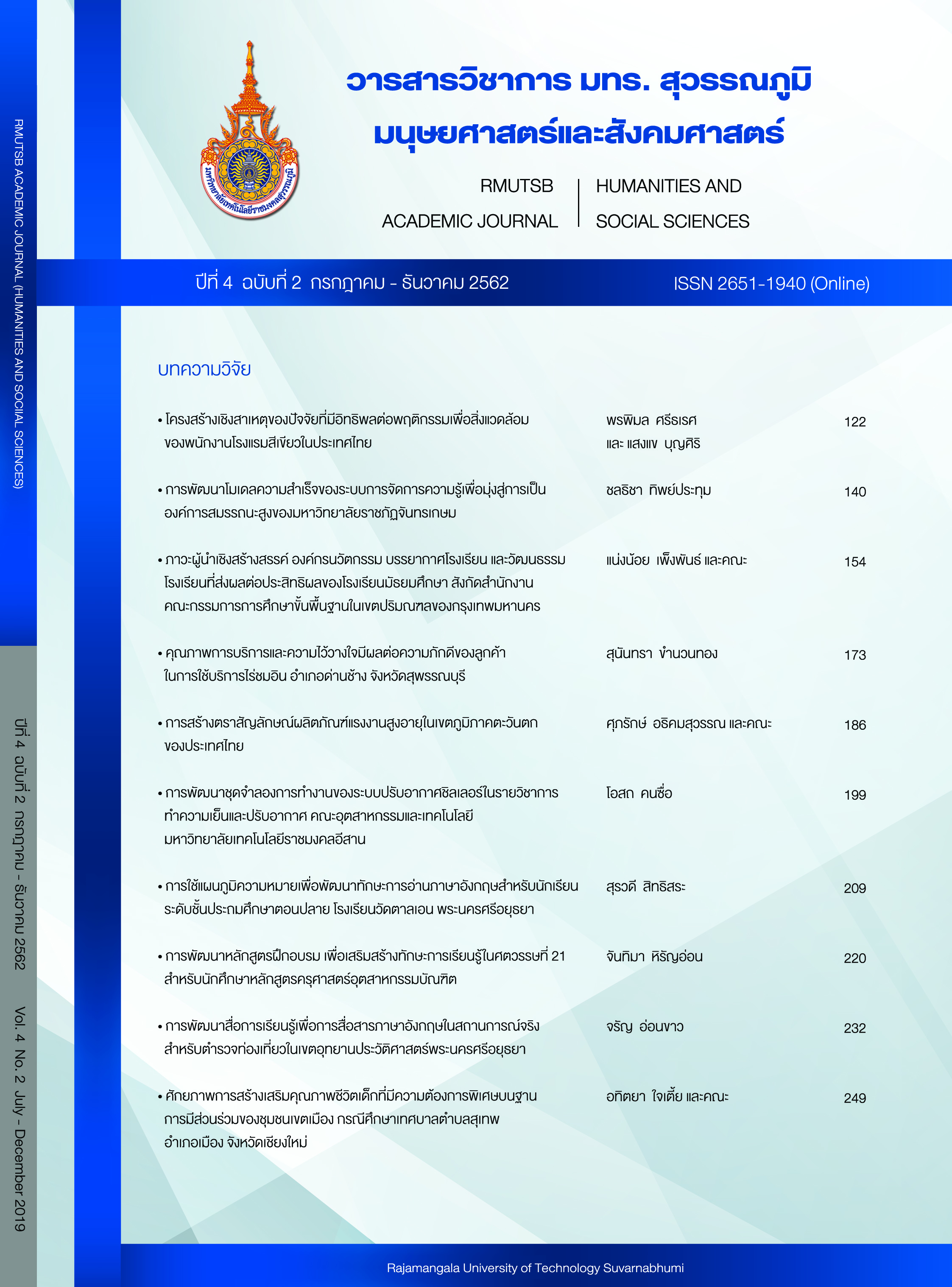Using semantic mapping to develop English reading skill of upper primary school students, Wattan-En School, Phra Nakhon Si Ayutthaya
Main Article Content
Abstract
The purposes of this study are to 1) compare the effects on reading ability gained before and after using a semantic mapping 2) study the satisfaction toward the acquired English reading skills of students of Wattan-En School, Phra Nakhon Si Ayutthaya. The sample of this study was 57 upper primary school students of Wattan-en School, Phra Nakhon Si Ayutthaya, selected by using purposive sampling. The instruments used in the study were four learning activity plans applied in the classroom, the English reading test and satisfaction questionnaires on using semantic mapping. The data was statistically analyzed by mean, standard deviation and paired t-test for dependent samples. The findings of this study revealed that: 1) the students’ ability in English reading skills was significantly improved to 0.05 levels after using semantic mapping, 2) the students’ satisfaction on using semantic mapping to learn English reading were at the highest satisfaction with a mean of 4.35.
Article Details
References
Ninpan, M. (2004). Research methodology in behavioral sciences and social sciences. Nakhon Pathom: Silpakorn University. (in Thai)
Pinyoanantapong, B. (2004). Educational measurement and evaluation. Bangkok: Aksorn Charoen Tat. (in Thai)
Rovinelli, R. J., & Hambleton, R. K. (1977). On the use of content specialists in the assessment of criterion-referenced test item validity. Dutch Journal of Educational Research, 2, 49-60.
Saiyod, L., & Saiyod, A. (2000). Learning measurement technique (2nd Ed.). Bangkok: Suweeriyasan. (in Thai)
Sakkumduang, S. (2009). English reading comprehension ability using mind mapping technique for Mathayomsuksa 4 students at Jaturamit Wittayakarn School (Master’s thesis). Khon Kaen University, Khon Kaen. (in Thai)
Songpradit, S. (1998). Remedial teaching for reading English comprehension using of cartoon picture for Prathomsuksa 5 Students (Master’s thesis). Chiang Mai University, Chiang Mai. (in Thai)
Sthanphol, S. (2011). Using semantic mapping to develop English reading comprehension of Mathayomsuksa 5 students (Master’s thesis). Srinakharinwirot University, Bangkok. (in Thai)
Suwan, S. (2013). Developmental theories in early childhood education. Retrieved 4 April 2019, from https://suwanlaong.wordpress.com/2013/05/25/ (in Thai)
Wihokto, P. (2003). A research synthesis on teaching and learning English. Academic journal, 6(9), 4-29. (in Thai)
Wongsothorn, A. (1986). Creating English language test questions techniques. Bangkok: Aksorn Charoen Tat. (in Thai)
Wongsothorn, A. (1996). English language testing and evaluation. Bangkok: Chulalongkorn University. (in Thai)
Wongrattana, M. (2007). Statistical techniques used for educational research. Nonthaburi: Taineramitkij Inter Progressive. (in Thai)


